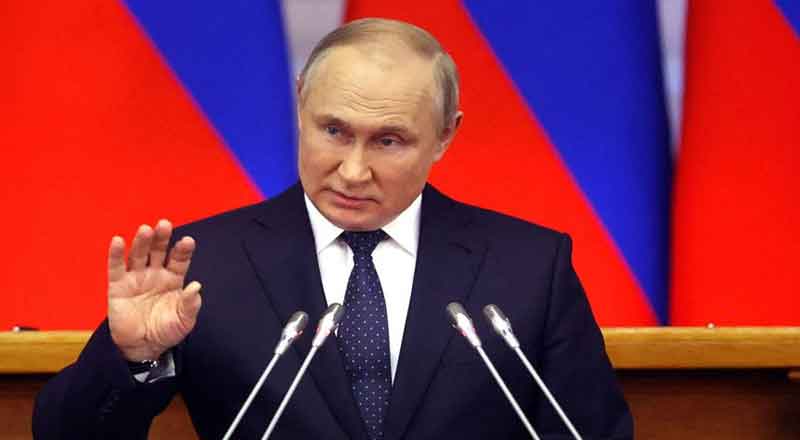A War That Refuses to Cool
The Russia-Ukraine war, now well past the 1,000-day mark, continues to evolve with high-stakes developments. With heavy human and financial tolls, the conflict remains a theater of strategic escalations. Recent days have witnessed intensified military actions as Ukraine fired long-range missiles, including the American ATACMS and British-made Storm Shadow cruise missiles, deep into Russian territory. These moves underscore Ukraine’s growing desperation to stall Moscow’s slow yet persistent advance toward Kyiv.
While these advanced weapon systems bring precision and firepower, questions linger: Can they meaningfully alter the battlefield dynamics, or will they merely escalate tensions, drawing more formidable responses from Russia?
Storm Shadow Strikes: What We Know So Far
On November 20, reports emerged of Ukrainian forces firing up to 12 British-made Storm Shadow cruise missiles at Russia’s Kursk region. Russian bloggers posted images of purported missile fragments from the attack, with Ukrainian officials neither confirming nor denying the deployment. When questioned, Ukraine’s Defence Minister Rustem Umerov cryptically stated that Ukraine was employing all means to defend itself.
This marks the first known instance of Storm Shadow missiles targeting Russian soil, as prior UK assurances limited their use to Ukrainian territories. However, this bold escalation signals Kyiv’s intent to leverage these high-precision weapons in response to Russian advances.
Lethality of the Storm Shadow Missile
Developed collaboratively by the UK and France, the Storm Shadow cruise missile—known as Scalp in France—boasts formidable capabilities. With a range of approximately 250 km (155 miles), these missiles can penetrate deep into enemy territory. Weighing 1,300 kg, the missile travels at over 965 km/h and features advanced navigation systems that minimize detection risks while maximizing target precision.
Storm Shadow missiles excel in destroying heavily fortified positions, such as bunkers and airfields, making them a valuable asset for Ukraine’s defensive and retaliatory strategies. Their history of use by British and French forces in conflicts across Iraq, Libya, and the Gulf has demonstrated their effectiveness. However, each missile costs close to $1 million, necessitating judicious deployment.
A Game Changer or a Tactical Tool?
The introduction of Storm Shadow missiles to Ukraine’s arsenal has strategic implications but limited practical impact due to their scarcity. Security experts argue that while these weapons possess exceptional accuracy and penetration, their effect on the war will likely remain marginal. Deborah Haynes, Sky News’ security editor, notes Ukraine’s stockpile of these missiles is severely constrained, reducing their potential to shift the broader dynamics of the war.
Matthew Savill, director of military science at the Royal United Services Institute (RUSI), echoes this view, pointing out that Russia has bolstered its defenses against long-range missile strikes, dulling their impact. Furthermore, the UK’s capacity to replenish Ukraine’s stock of Storm Shadow missiles is limited.
Nonetheless, the psychological effect of these strikes cannot be understated. For Kyiv, deploying such advanced weaponry serves as a message of defiance and capability, potentially bolstering domestic morale and sending a clear signal to international allies and adversaries alike.
Russia’s Response and Escalation Risks
From Moscow’s perspective, Ukraine’s use of Storm Shadow missiles and the US’s approval of ATACMS represents a troubling escalation. In response, Russian President Vladimir Putin has signaled a hardening stance, revising nuclear policies to lower the threshold for potential use of nuclear weapons. Such developments heighten the risk of further intensifying an already volatile conflict.
Additionally, Russia’s recent counterattacks, supported by reinforcements that include 10,000 North Korean soldiers, indicate its determination to maintain pressure on Ukrainian forces. Ukrainian incursions into western Russia have faced fierce resistance, with some units driven back, highlighting the challenges Kyiv faces even with advanced weaponry.
The US Push Before a Policy Shift
The increased pace of military assistance from Western allies coincides with political changes in the United States. As President Joe Biden nears the end of his term, his administration appears focused on bolstering Ukraine’s position ahead of potential negotiations. Biden’s authorizations for the use of advanced weaponry, including anti-personnel landmines, reflect this urgency. Analysts speculate that these moves aim to secure Ukraine a stronger bargaining position before President-elect Donald Trump, who has criticized US aid to Ukraine, assumes office.
Tactical Gains, Strategic Uncertainty
The deployment of Storm Shadow missiles highlights Ukraine’s escalating efforts to push back against Russia’s grinding advance. While these weapons bring undeniable tactical advantages, their limited supply and Russia’s countermeasures restrict their overall impact.
However, the psychological and strategic significance of these strikes cannot be ignored. They reinforce Kyiv’s message to allies that continued military aid is crucial while signaling to Moscow that Ukraine remains defiant.
As the conflict intensifies, the broader question looms: can advanced weapons and Western support shift the balance of this war, or will these developments merely escalate the stakes in a protracted and devastating conflict? The answers may hinge not just on the battlefield but also on the negotiating table in the months to come.
(With inputs from agencies)





